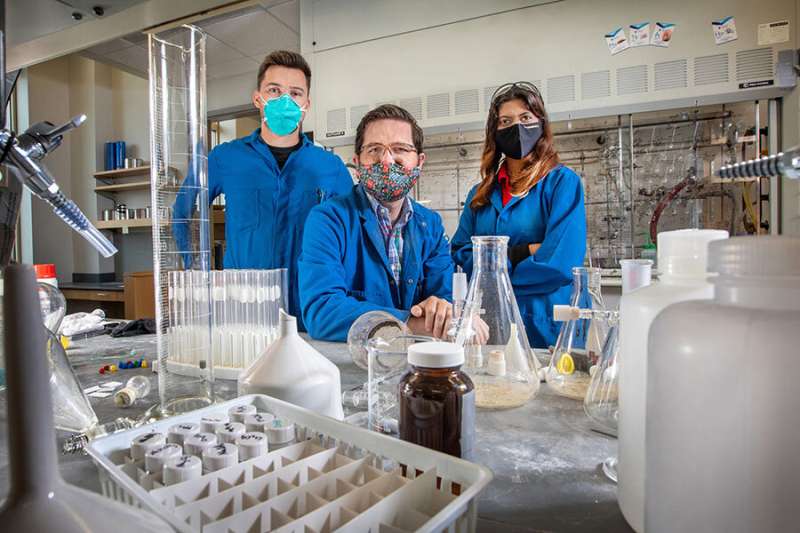A new system to build a compound critical to drug development

A team of Florida State University chemists has developed a faster way to synthesize a class of compounds that are commonly used in the development of new medications.
Assistant Professor of Chemistry and Biochemistry Joel M. Smith along with doctoral student Thiago Grigolo and undergraduate Ariana Subhit published a paper in the journal Organic Letters that outlines the process. This new reaction uses readily available materials and merges them with alkynyl building blocks with exquisite selectivity to synthesize dihydropyridines and piperidines, important rings that contain carbon, hydrogen and nitrogen.
Researchers across the world often make synthetic versions of naturally occurring organic compounds and turn them into therapeutics. Commonly, chemists typically use a piperidine ring as the starting scaffolding to build upon to forge new medicines. Substituted versions of piperidine rings can be difficult to synthesize, especially when substitution patterns and molecular space become more and more demanding to access.
Smith, Grigolo and Subhit created a simpler, faster process that chemists could use to produce piperidine rings more quickly and thus speed pharmaceutical development. Using their method, they were also able to asymmetrically synthesize a variety of piperidine-related products that have never been synthesized in a laboratory setting previously.
"Being able to build a variety of piperidines is of great interest to chemists," Smith said. "We're trying to create a toolbox of chemical reactions one could use to build a piperidine."
In order to selectively control the stereochemistry into this new reaction, the team attached an amino acid derivative to a specific spot on the piperidine that allowed them to control the outcome of the coupling event. Inspired by how enzymes use amino acids to control chemical reactions in a biological setting, the leveraging of amino acids to afford selectivity makes the process practical and economical. This was important in their asymmetric construction of the natural product lupinine, a chemical compound that can be used to interfere with the breakdown some neurotransmitters.
"It was wildly efficient," Smith said.
In the future, the team hopes to use this process on a variety of other compounds that have even greater value.
"There are a lot of potential applications," Grigolo said. "Also, since we put it out there, anyone can use it."
Smith said the team's ultimate goal is to make a variety of processes that are easily accessible to other researchers who are working to develop drugs for any manner of conditions. Smith noted that his undergraduate students were able to perform these reactions, so any industry chemist would easily be able to use it in drug development.
"We want it to be practical," he said. "Lots of chemistry is novel but not practical because people don't have access to esoteric entities needed to do it. We want it to be accessible."
More information: Thiago A. Grigolo et al, Regioselective Asymmetric Alkynylation of N-Alkyl Pyridiniums, Organic Letters (2021). DOI: 10.1021/acs.orglett.1c02276
Journal information: Organic Letters
Provided by Florida State University





















